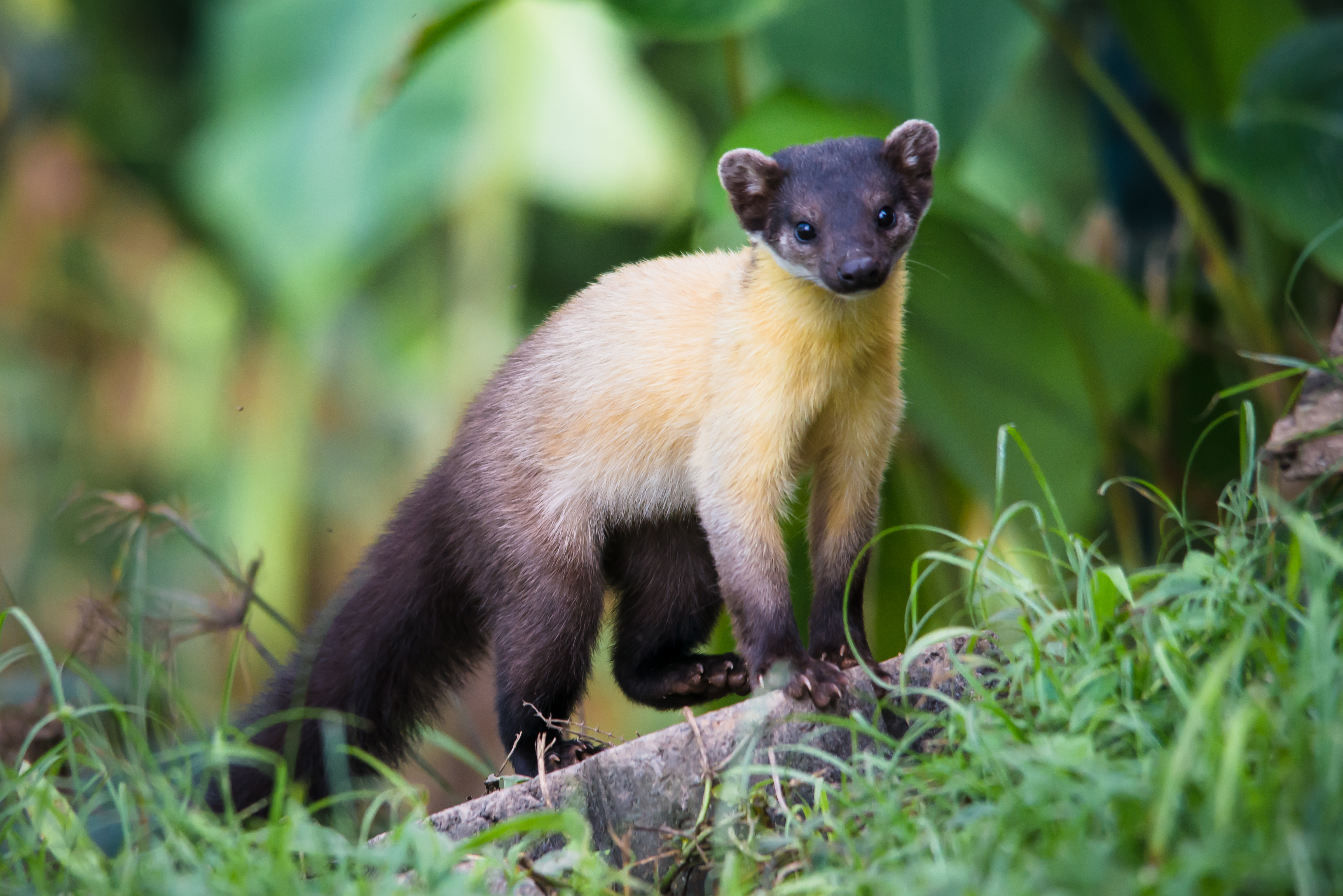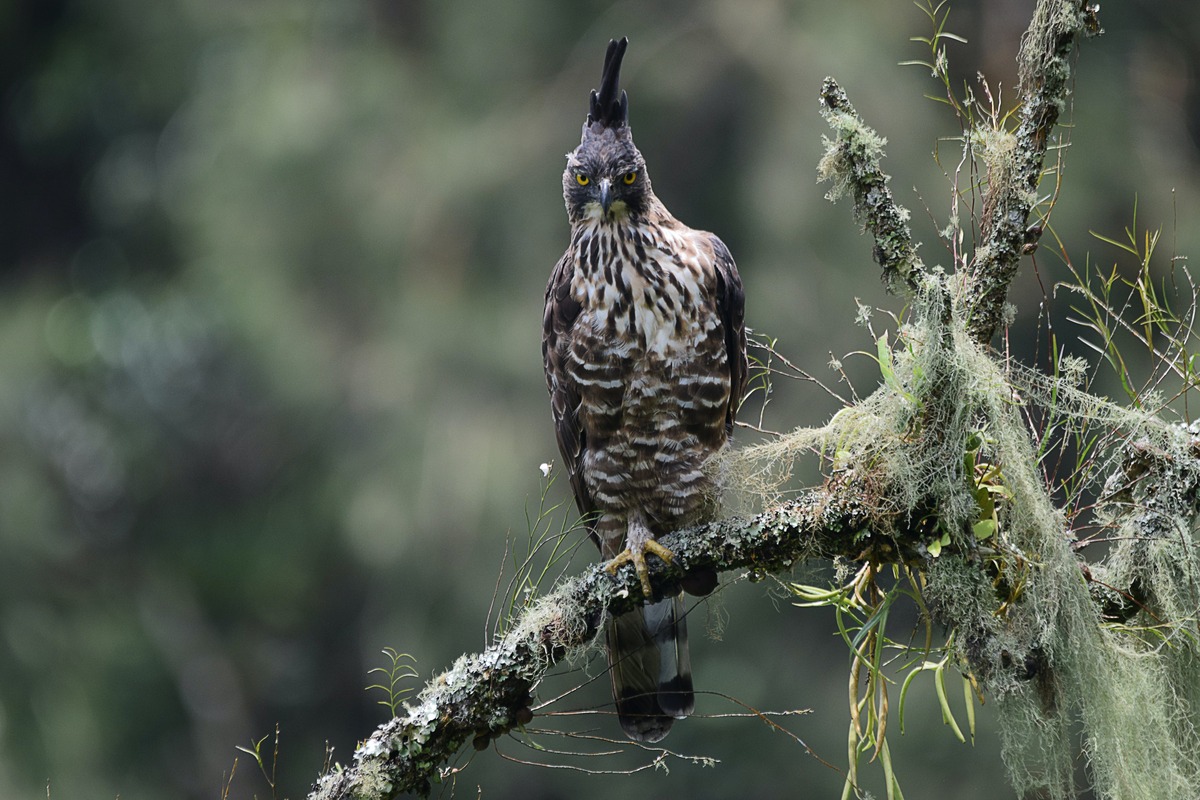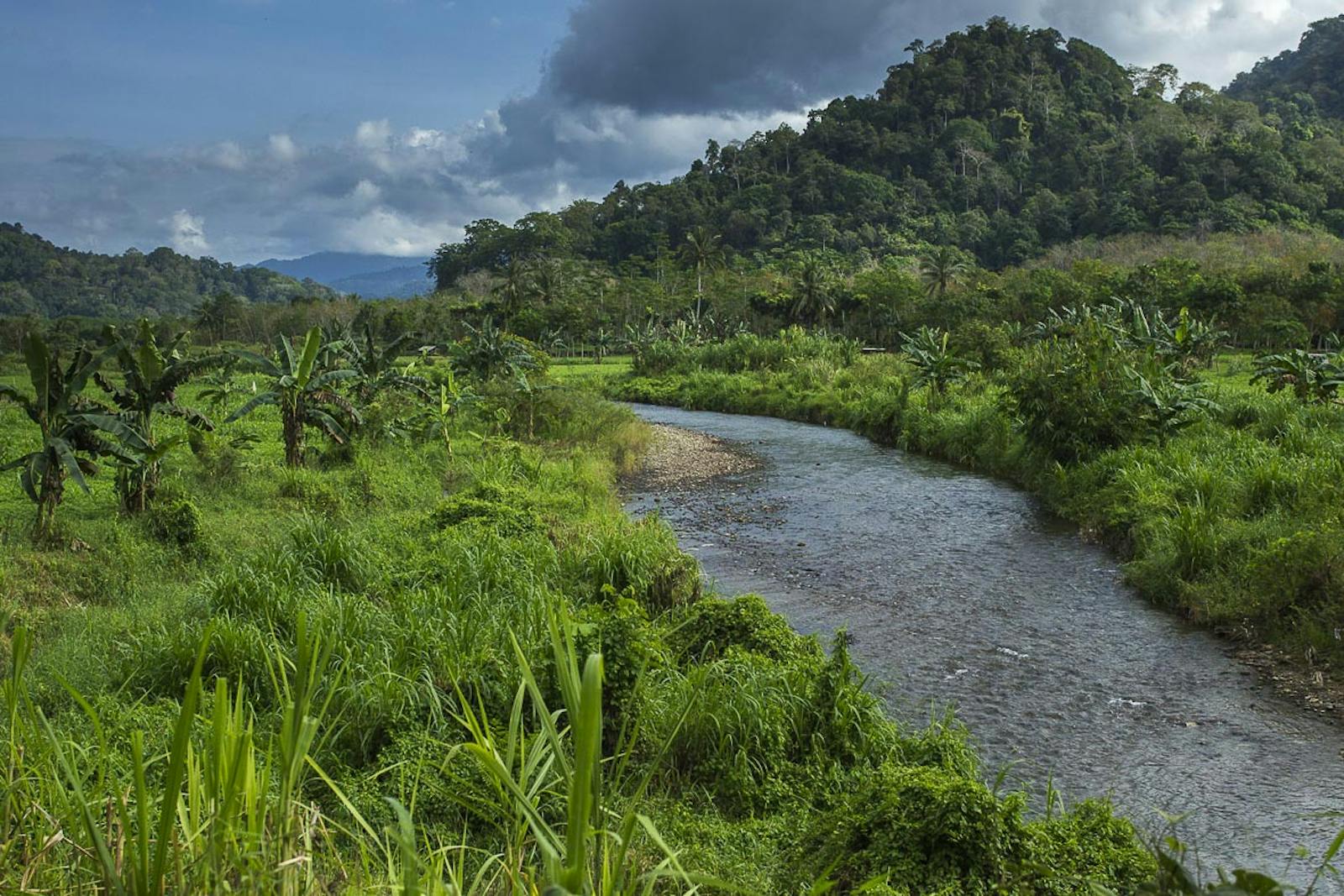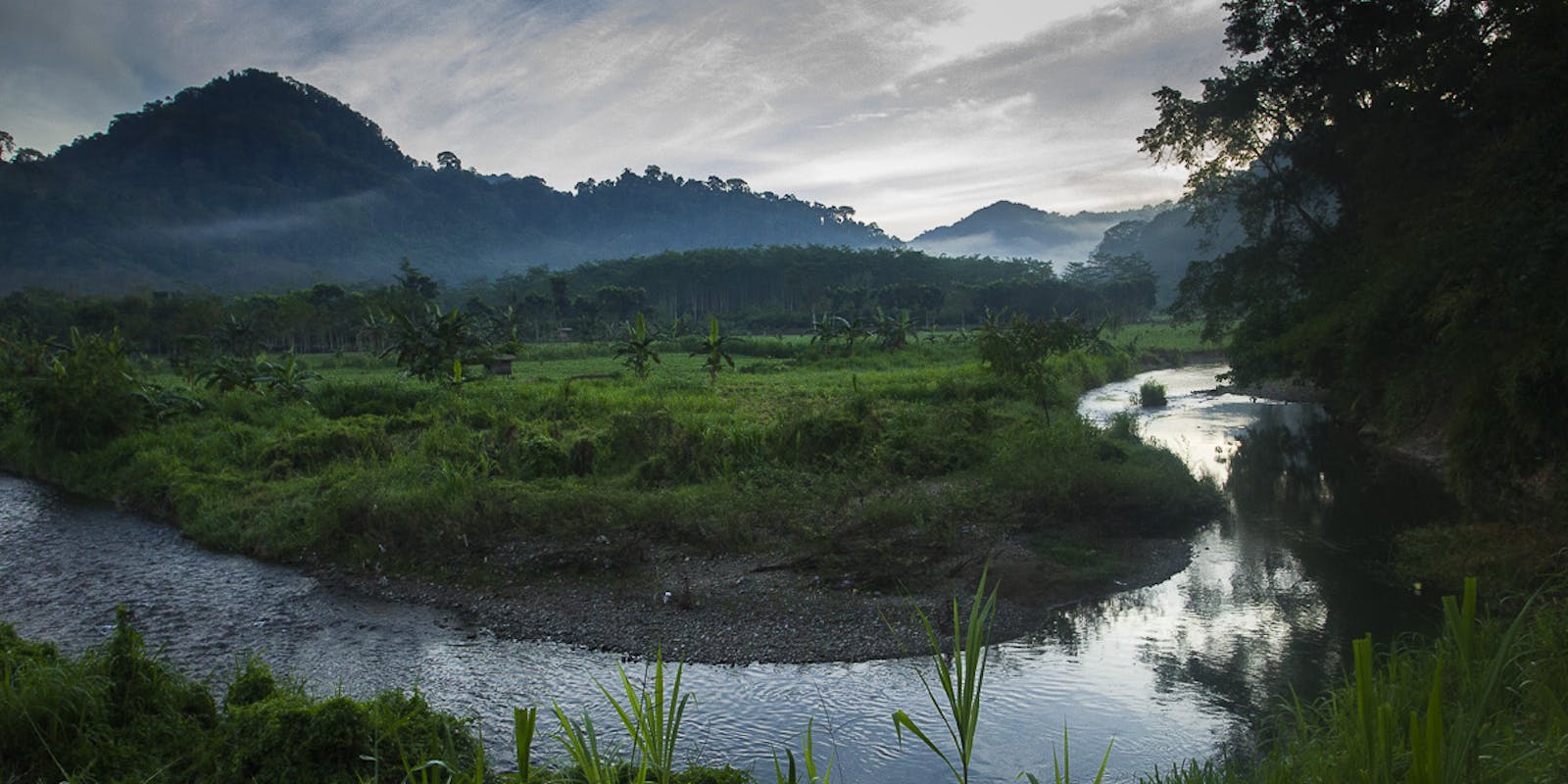Eastern Java-Bali Rainforests
The ecoregion’s land area is provided in units of 1,000 hectares. The conservation target is the Global Safety Net (GSN1) area for the given ecoregion. The protection level indicates the percentage of the GSN goal that is currently protected on a scale of 0-10. N/A means data is not available at this time.
Bioregion: Javan-Bali Tropical Rainforests (IM17)
Realm: Indomalaya
Ecoregion Size (1000 ha):
5,402
Ecoregion ID:
230
Conservation Target:
13%
Protection Level:
2
States: Indonesia
Bali. A tranquil paradise island that evokes images of picturesque, green landscapes of terraced rice paddies. But these have come at heavy costs in biological diversity, as species-rich rainforests were cleared to make way for fields of a rice monocrop.
The mammals, birds, reptiles, amphibians, and plants that had evolved through millennia to create the rainforests were sacrificed, and driven to the brink of extinction. Some, such as the endemic Bali mynah, have managed to hold out in isolated, protected forest patches, but the larger animals like the Bali tiger have now been extirpated due to habitat loss and a range of other anthropogenic forces.
.%20West%20Bali%20National%20Park%2C%20Indonesia.%20Image%20by%20JJ%20Harison%20-%20own%20work%2C%20CC%20by-SA%203.0.jpeg)
The Bali myna (Leucopsar rothschildi) is the flagship species of the Eastern Java-Bali Rainforests ecoregion. Image by JJ Harison - own work, CC by-SA 3.0.
The Eastern Java–Bali Rain Forests ecoregion represents the lowland moist forests of the eastern half of the island of Java and Bali, and the smaller islands off the northern coasts of both. The islands emerged from volcanic activity and lie along the famed Ring of Fire, the horseshoe-shaped, seismically active edge of the northern Pacific Plate. The island of Java emerged during the Miocene 26 million years ago as a series of volcanos that coalesced over time to form the larger island. Bali emerged more recently, during the Pliocene about 3 million years ago.
The climate in eastern Java and Bali is drier relative to western Java. Average annual rainfall ranges from 1,500 to 4,000 mm, with a four to six-month dry season. Thus, the lowland forests are predominantly moist deciduous, with semi-evergreen rainforest along the moister south coast. No single plant family dominates the forests of Java, unlike in other Asian rainforests which are dominated by trees of Dipterocarpaceae.

A yellow-throated marten (Martes flavigula) in the wild. Image credit: Rushenb, Creative Commons
The forests have a sparse canopy, and few trees exceed 25 m in height. Common lowland deciduous trees are Homalium tomentosum, Albizia lebbekoides, Acacia leucophloea, Acacia tomentosa, Bauhinia malabarica, Cassia fistula, Dillenia pentagyna, Tetrameles nudiflora, Ailanthus integrifolia, and Phyllanthus emblica. The semi-evergreen rainforests of Java are characterized by Artocarpus elasticus, Dysoxylum caulostachyum, Lansium domesticum, and Planchonia valida. Because so little natural lowland forests remain in Bali, the composition of natural vegetation is harder to determine, but likely comprised of Dipterocarpus hasseltii, Planchonia valida, Palaquium javense, Duabanga moluccana, Meliosma ferruginosa, and Pterospermum javanicum.
Tigers are now extinct on both islands. But the critically endangered Javan leopard still survives, albeit tenaciously. Other large mammals that have survived are banteng and Javan warty pig. The critically endangered Kuhl’s deer is endemic to the small island of Bawea, 120 km off the northern coast of Java. This species is considered to be a Holocene-era relict that survived on Bawea, but its ancestral form was outcompeted on Java by Javan rusa deer and southern red muntjac.

Javan hawk eagle. Image credit: Eko Prastyo, Creative Commons
Fruit bats play an important ecological role in these forests by pollinating and dispersing seeds. An example is the cave nectar bat, which is an important pollinator of the durian tree. The karst limestone caves of the Kangean Islands off Bali are refugia for most of the 15 bat species on these islands. The ecoregion supports 350 bird species, including several endemic species such as the Bali starling, Javanese lapwing, and Javan hawk eagle. The two Endemic Bird Areas collectively include 37 restricted-range species.
Logging concessions, agriculture, and infrastructure to support a burgeoning human population and economy have taken a huge toll on the natural ecosystems here. Unfortunately, only 3% of the ecoregion is under formal protection. Wildlife is also extensively hunted.
Recommended conservation priority actions:
- Organize public awareness campaigns to garner public and political support for conservation to stop poaching.
- Restore and protect linkages between lowland and montane habitats.
- Initiate in-situ recovery plans for critically endangered species.
-
-
1. Darajati, W., Pratiwi, S., Herwinda, E., Radiansyah, A.D., Nalang, V.S., Nooryanto, B., Rahajoe, J.S., Ubaidillah, R., Maryanto, I., Kurniawan, R. and Prasetyo, T.A., 2016. Indonesian Biodiversity Strategy and Action Plan (IBSAP) 2015-2020. Kementerian Perencanaan Pembangunan Nasional (BAPPENAS).
2. Whitten, T., Soeriaatmadja, R.E. and Afiff, S.A., 1996. Ecology of Java & Bali (Vol. 2). Oxford University Press.
3. Wikramanayake, E, E. Dinerstein, et al. 2002. Terrestrial Ecoregions of the Indo-Pacific: A Conservation Assessment. Island Press. -
Cite this page: Eastern Java-Bali Rainforests. Ecoregion Snapshots: Descriptive Abstracts of the Terrestrial Ecoregions of the World, 2021. Developed by One Earth and RESOLVE. https://www.oneearth.org/ecoregions/eastern-java-bali-rainforests/
-




